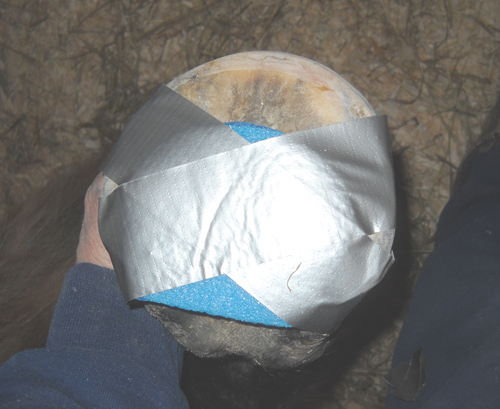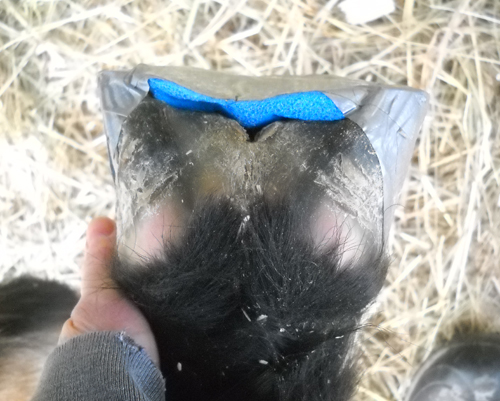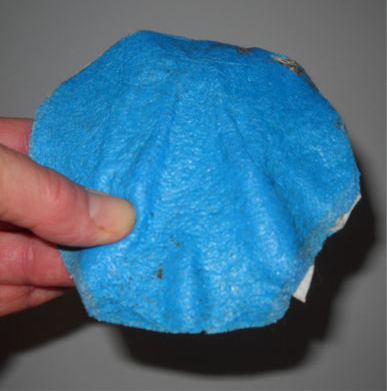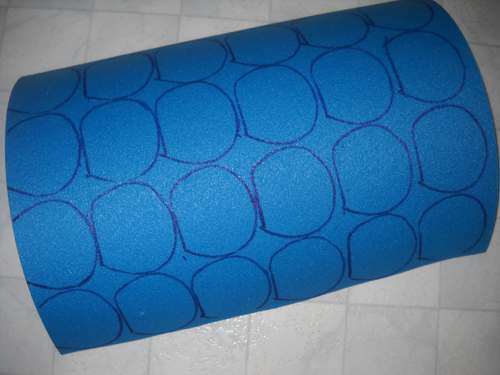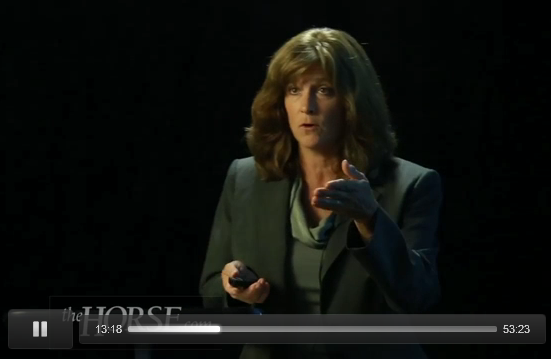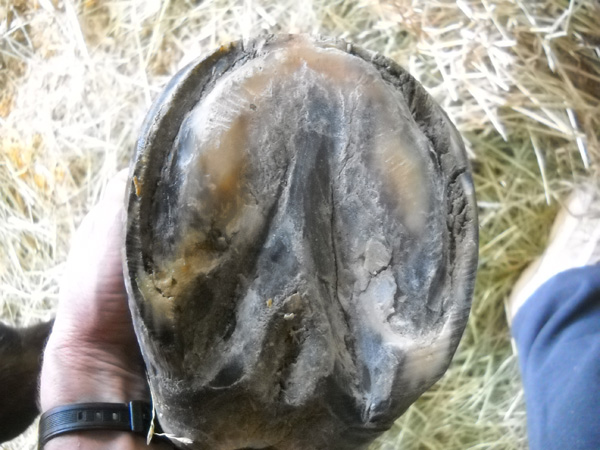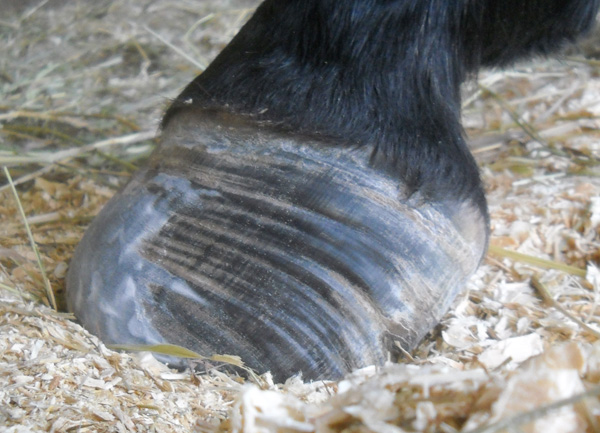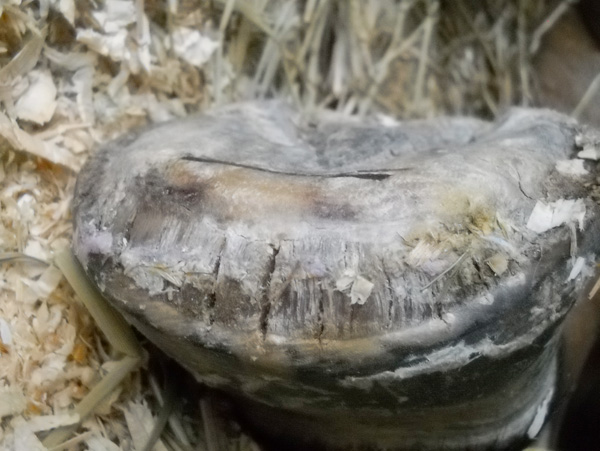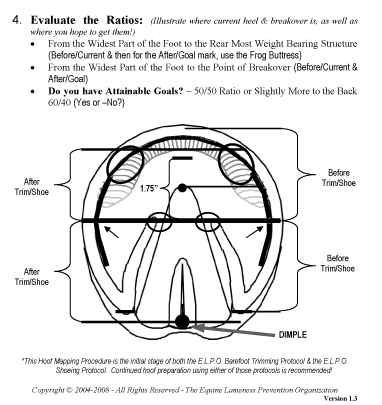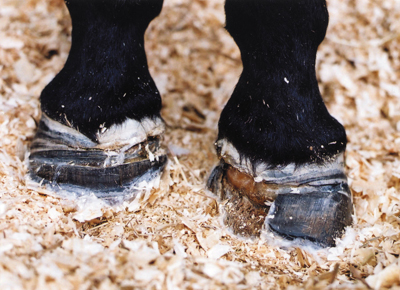Mastitis treatment clears up frog infections in horse foot
August 2022 was the third August in a row in which Kurt, 26, developed an infection in the frogs of all four of his feet.
This time, I applied a drug for cow mastitis to his frogs, and that seemed to fix the issue.
I thought this summary of our experience might help someone else.
There were no physical changes in Kurt’s frog during the summer. No wet area. No deep crack. No smell.
In mid-August, he started moving less and put his feet down toe heel. Watch the video to see that toe-heel placement (it’s the third clip in the series of clips).
Standing still, Kurt looked fine. Grazing, he could lean over his front toes and look as normal as any horse. I’ve never seen a horse having an active bout of laminitis lean over its toes.
This wasn’t a new bout of laminitis, though it likely was the result of compromised hoof walls from Kurt having chronic laminitis since at least 2010.
A study by Susan Kempson and Elaine Campbell at the veterinary school at the University of Edinburgh found that horn considered to be of poor quality had a weaker permeability barrier than horn of good quality.
Thus, laminitic hooves that no longer have good horn would not be moisture proof, as typical hooves are. This would allow bacteria and fungus to reach sensitive tissue.
I thought I could prevent the frog infections this year by spraying Kurt’s frogs every day with a Listerine type product. His frogs looked fabulous all summer. They were not too hard or too soft. I could use a hoof knife on them; in the past, they have been too hard to trim with a hoof knife.
I was so confident in my plan that I wasn’t watching for any walking issues that would indicate a frog infection.
But Kurt has one other “tell” when it comes to the frog infections: He bites his heel bulbs. The worse the infections get, the more he bites his heel bulbs. This year, the biting reappeared in August and got worse as September arrived.
He’s been biting his heel bulbs occasionally going back to at least 2014. So I’m wondering how long he’s been getting these infections, and I haven’t known it because they’ve been masked by numbness from laminitis.
Since Laminil has knocked out the inflammation in his feet the past few years, Kurt is really feeling these infections now.
I put together the video to show Kurt’s response to treatment. The video starts with him sound, miraculously, in May 2022 despite April and May traditionally being bad months for him. That victory, I believe, is due to him being treated throughout the spring with Laminil IM, a therapy that stops inflammation.
The video shows Kurt still sound in late July.
Then, the video shows how Kurt’s walking went south with the frog issues and was at its worst in late September 2022 and early October.
I was panicking by that point.
Internet searches suggested that thrush is the most common infection in the frog and back of the hoof.
But thrush involves moisture, and the frog often smells.
August 2022 here was very dry after one big rain at the start of the month.
Kurt spent his daytime hours during August in his shed in deep shavings in front of several fans and an air cooler. If anything, I was worried his feet were too dry. He walked around his pastures at night. He was free to walk around during the day, but the flies made him want to stay in.
When the frog pain occurred a year earlier, in August 2021, I soaked Kurt’s feet every day. It took several tries to find the right soaking agent, but we succeeded in getting rid of the infections with a Listerine-type product, which is why I kept using it to spray his feet over the winter and through the summer.
This August, soaking did not help at all. I kept trying for five weeks. I first used the same Listerine-type product and, when that didn’t work, I tried (one at a time) Clorox, apple cider vinegar, and various other things.
He got worse.
Things looked pretty hopeless the last weekend of September, and he was starting to lie down a lot. I stumbled over a YouTube video by a farrier who said he used a mastitis product of penicillin mixed in sunflower oil to cure a bad frog infection.
Using Go-Dry on Kurt’s feet
I ordered a box of 12 tubes of a product called Go-Dry and tried it starting on Oct. 1.
Kurt was definitely better within 24 hours, continued to improve day by day, and was close to sound in a month. His right front took longer to heel than the other frogs.
There are other products with the same formula. I have no affiliation with Go-Dry, and I’m not promoting it over other options.
Go-Dry comes in a dewormer-like tube, though smaller, and I found one tube applied generously did two feet, so I used two tubes per day to do all four feet. One box of 12 tubes lasted six days.
Removing the cap was a bit of a puzzle. It came off if the whole tip was pushed to the side.
I applied Go-Dry in the central sulcus of each of Kurt’s frogs and collateral grooves next to his frogs, then spread it all over the heel area across both bulbs, along the hairline, and into the dimple area, rubbing it in for about 30 seconds.
I had no guidelines here. I was just winging it.
Apparently, Go-Dry’s usefulness in hoof issues is common knowledge to others. When I asked if the local feed store had any after I started using it, one employee there, a jumper rider, looked surprised at first because he knows I have no cows, then said, “Oh, for your horse’s hooves.”
Am I sure it was the Go-Dry that made my horse better? He improved the day after starting treatment and just kept improving.
The weather didn’t change. His diet didn’t change. His bedding didn’t change.
In 2020, I interpreted the toe/heel walking as his feet being too dry and tried moisturizing them for weeks. He got worse.
So I believe the sunflower oil was not what fixed the problem in 2022. I think it was the penicillin.
How do we proceed from here? I am not sure.
I don’t want the penicillin to become ineffective for these infections. I’m using Go-Dry on his feet twice a week right now. That will need to end.
Will he stay sound? Hope so.
How do we prevent the frog infections next year? Definitely looking for that answer.
